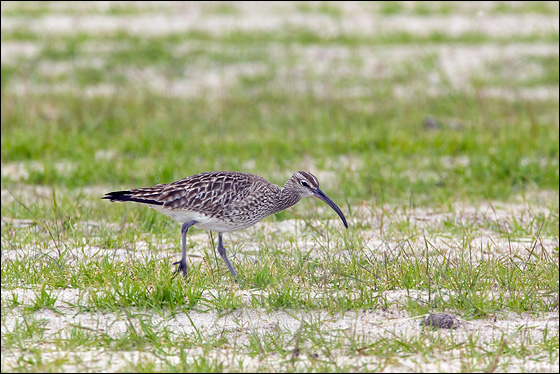Whimbrel (Numenius phaeopus))
Remarkable though it may seem, the arrival date of some Whimbrels on their European breeding grounds is correlated to the rhythm of the moon. This is not because the birds themselves are sensitive to the lunar cycle, but because it affects their pre-migration food supply, fiddler crabs. The crustaceans come out in large numbers when the moon is full to look for a mate. The birds gorge upon them, fuel up and fly to Europe. The earlier the full moon occurs around the birds’ general departure time (March and April), the earlier they set off.
Upon arrival here Whimbrels settle on open tundra, on moorland with short vegetation, or in peaty bogs among forests. Their centre of distribution is well to the north of that of the closely related Curlew. In the first few days of their stay Whimbrels often feed on large numbers of berries, but then revert to a diet of insects, spiders, worms, snails and slugs. Wherever they occur they tend to pick from the surface rather than probing deeply as the Curlew does, although their kinked bill is handy for reaching down the short burrows of crabs in the non-breeding season.
The nest site itself is usually on dry open ground. Both parents share incubation and tend the chicks, although the brood may be split early on, with the male tending the older chicks while the female stays on the nest. Some broods may eventually amalgamate into crèches, and where this happens both adults have the chance to begin their migration early. The crèche members remain as a flock and migrate as a juvenile group.

